I'm Jessica Box, Head of Growth at Linktree. Coming from over a decade of experience in agency, early-stage startup and scale-up, I'm really excited to be sharing the incredible learnings I've had throughout my career on growing organizations.
Specifically, I'm going to share how Linktree has grown from zero to 12 million users in less than four years. Basics first...
What is a Linktree?
A Linktree is the only link you'll ever need and no, it's not an actual tree. Linktree is the market-leading linking platform that was the first of its kind creating an entirely new category in tech.
With over half a billion visitors per month, 30,000 signups per day, we're allowing users to curate a singular destination with what's most important to them in real-time.
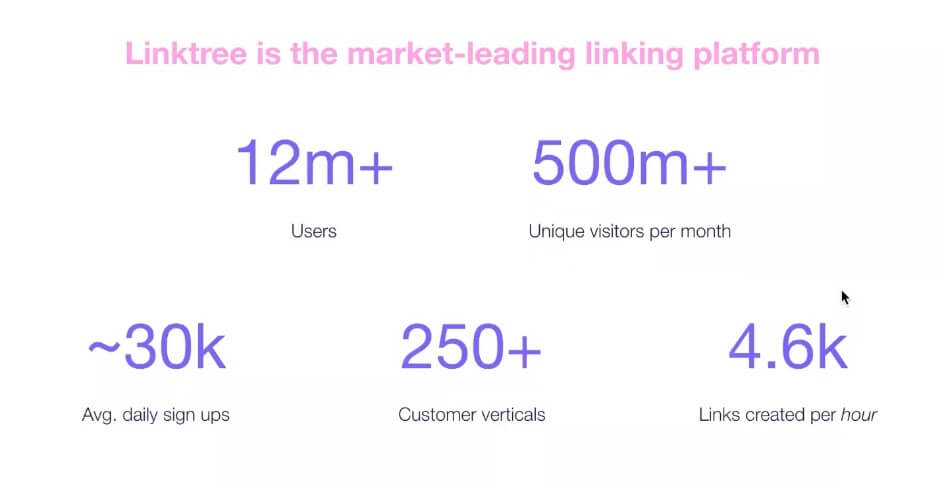
The world's biggest influencers, as you can see from this pretty epic list and creators from Selena Gomez to Ani (I encourage you to check out his Linktree, it's pretty epic), as well as big brands like HBO, and TikTok are using Linktree to connect their followers to their entire online ecosystem.
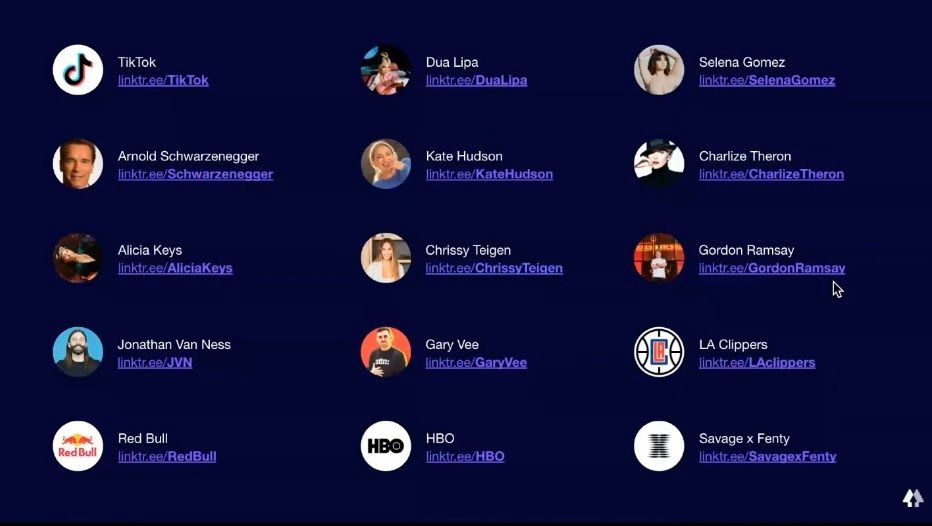
And there's many, many more from here.
How did we get there?
I'll be covering off lessons and failures to avoid at each stage of the growth journey, including:
- Zero to 12 million users, the seed years,
- Two to 5 million, the seedling years,
- Five to 12 million, the sapling years, and
- 12 million plus, the mature years.
I think we're nearly there but like to think that maturity is still yet to come as well.
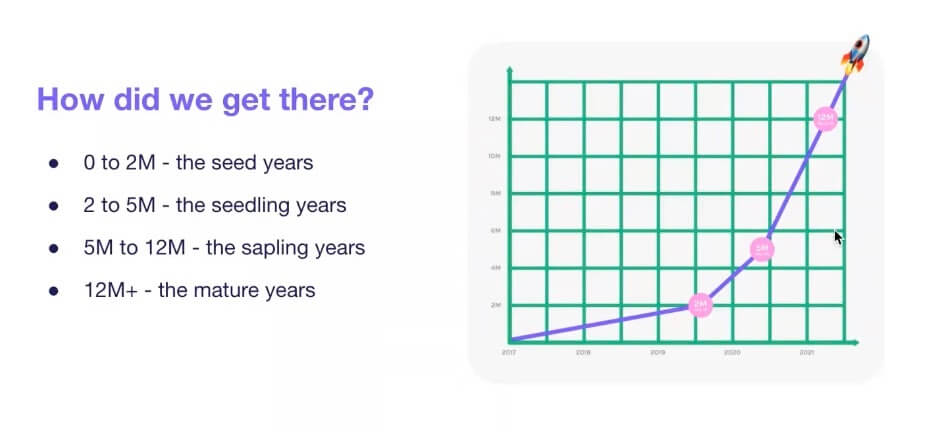
Let's start with zero to 2 million customers and the early years.
0 to 2M - the seed years
Build the right thing
Sounds simple, doesn't it? Then why isn't everyone doing it? This is the foundational building block of design thinking that feeds into creating your product strategy as I'm sure many of you are aware.
I cannot stress enough that if you don't focus on your product strategy on solving customer problems early on, you won't have a later on.
Example: Google Glass
Google Glass is a great example of this - wearable technology was cool when they were launched in 2013.
The principle of 'we think technology should work for you to be there when you need it and get out of the way when you don't' should have been a red flag enough for the eventual discontinuation in 2015 due to not living up to the hype.
Three critical steps
When kicking off and starting that journey at the zero point, there are three things that are critical and we've seen work really well at Linktree.
#1 Get the product in the right hands
The first one is getting the product in the right hands. This one is directly linked to the problem you solve. If you haven't found the right hands, it means you may not be solving a problem yet.
Linktree was born from a digital agency managing large-scale music clients that were finding it incredibly frustrating needing to update their links online with every new launch, festival, or merch sale.
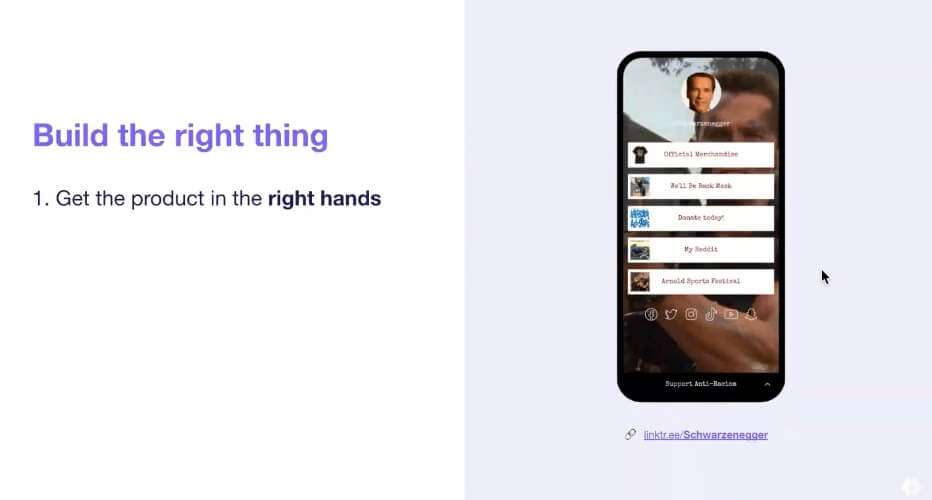
It turns out the fragmentation problem with online content and music was also a problem for every industry. So the right hands for us was a global audience in every country around the world.
#2 Listen and iterate
The second one at this stage is listen and iterate, this one should stay with you as you grow, but is absolutely critical at the zero to 2 million stage.
Linktree was originally built in six hours, shipped to market quickly, then iterated on what's real data came through from customers.
The original code has only recently been replaced by infrastructure for scale, which is why it's so important to build the right thing in the early days, so you can build the thing right once you have product-market fit.
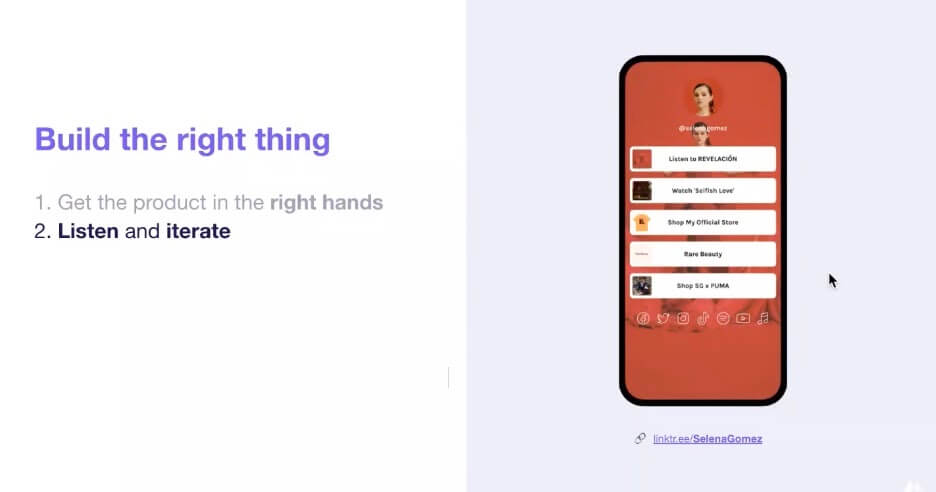
To help with this, the Linktree team spent hours every day in customer support to ensure they remained in touch and really connected to how people were using Linktree in those early days.
The active listening and providing customers the support at that stage then lead to new opportunities like expanding from just being for Instagram in the beginning into every channel that an audience lives for our users.
#3 Find your flywheel early
The third one here is to find your flywheel early. For those unfamiliar, the flywheel is your customer engine for growth. Rather than a funnel, which puts your customer at the bottom, the flywheel has your customer in the center.
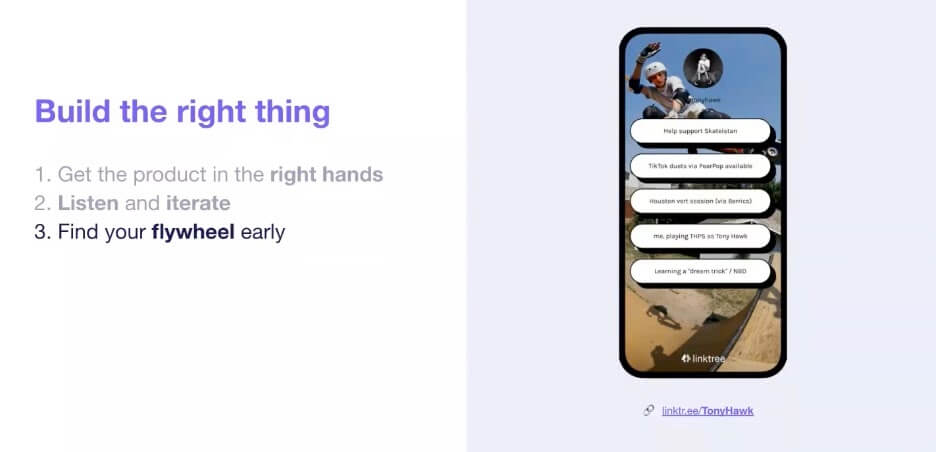
It is a fundamental factor to grow from the outside in and needs to be right there from the very beginning. A metric to measure this is the K factor, but fundamentally, it means your customer is acting as your referral channel and it's a modern-day word of mouth.
Here's an example of a flywheel framework so you can see it in action.
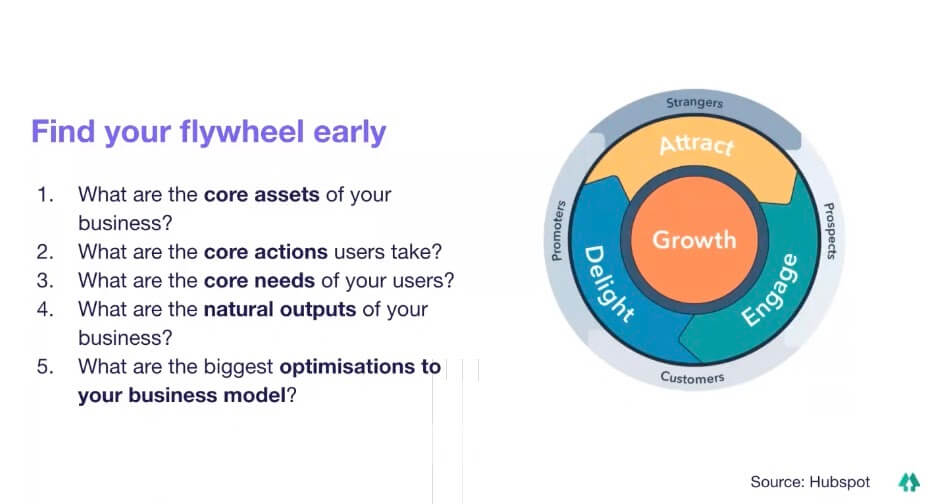
Each company will have different actions and behaviors that drive the flywheel and its speed. So I'd suggest asking yourselves the questions on the image.
What are the core assets, the core actions, the core needs, the natural outputs of your business, and the biggest optimizations you need to make to your business model?
Example: Amazon
To give you an example of how this plays out in the wild, Amazon's flywheel is driven by lowering cost structures, which means prices can be lower, providing a better customer experience that then increases both traffic and sellers.
The secret sauce here is in each action, increasing the speed of the flywheel and building momentum.
What fails at this point?
Thinking marketing will solve the product problems.
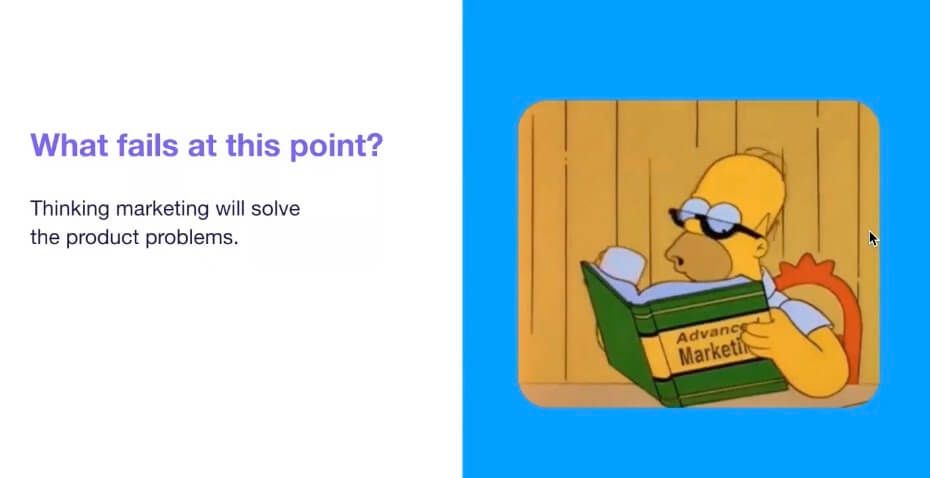
I experienced this personally not too long ago, throwing money at the problem didn't actually solve for the fact the product wasn't working. If you feel tempted by this path, stop yourself and look long and hard at the problem you're solving.
It's easy to lean into your ego and struggle to let go of the epic work, which I'm sure all of you have put in at this point. But trust me, the quicker you iterate, the faster you find your flywheel and scale.
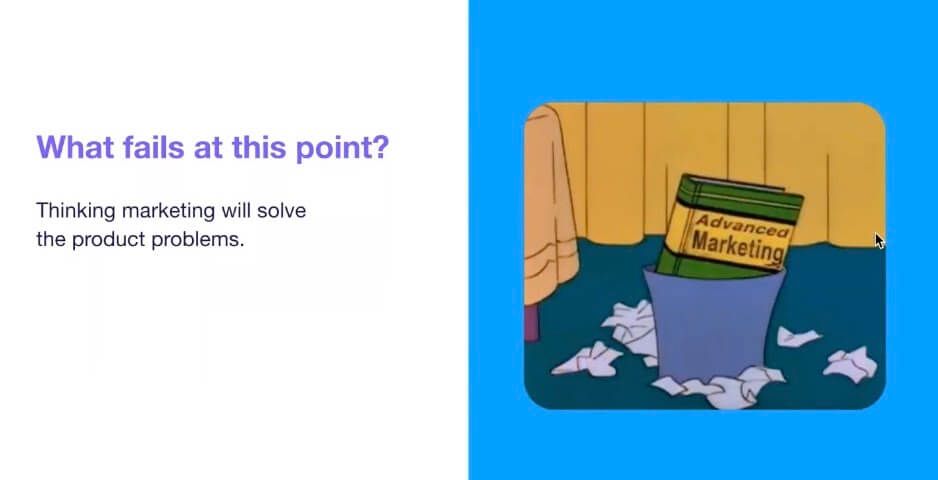
Failure is not a word to be scared of, but one to share and celebrate the learnings from.
2 million to 5 million customers - the seedling years
The beginning of the next hard part
This is the stage I like to think of as the hard part being over and the next hard part just beginning.
It's now easy to get people in the door with your company size now sitting between 20 to 30 people and brand awareness solidly present in the market you're in. So what's next?
Activation is going to be your best friend here.
How do you get customers to activate faster?

Work cross-functionally as a team
The first one is working cross-functionally as a team. It's easy to see activation as only one function and not realize the best way to get diverse ideas for this stage of the funnel is to work with diverse minds.
Diverse minds = better outcomes for customers
We created a squad growth at this point that encompasses engineering, product, design, brand, customer success, data, and more depending on the initiatives we were feeding through into the team.
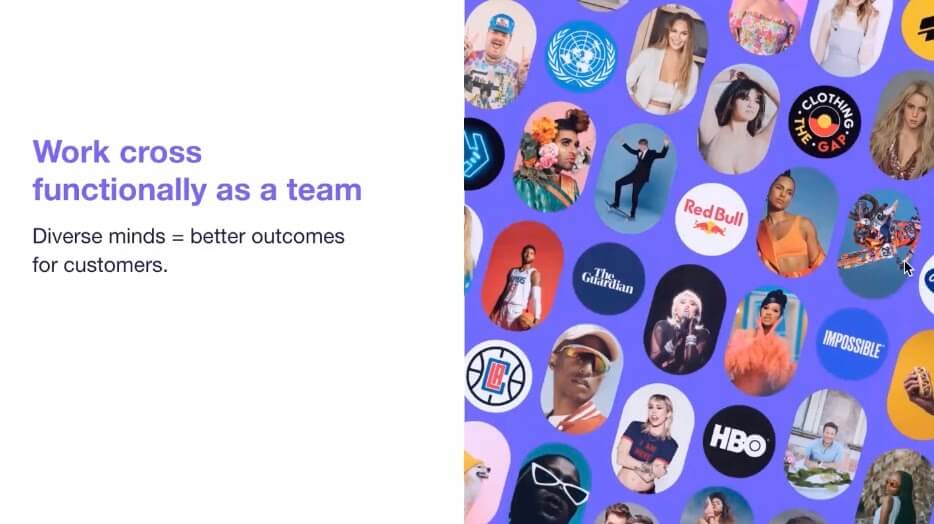
Find your activation metric
It's also equally as important to measure activation. We use AppCues which we're big fans of and I was shocked when I saw a report from them that mentioned 44% of SaaS businesses don't measure activation at all.
At Linktree we know if someone adds Linktree to their social profile, is activated, the likelihood of them leaving is significantly lower.
Find your activation metric and go absolutely hard after it.
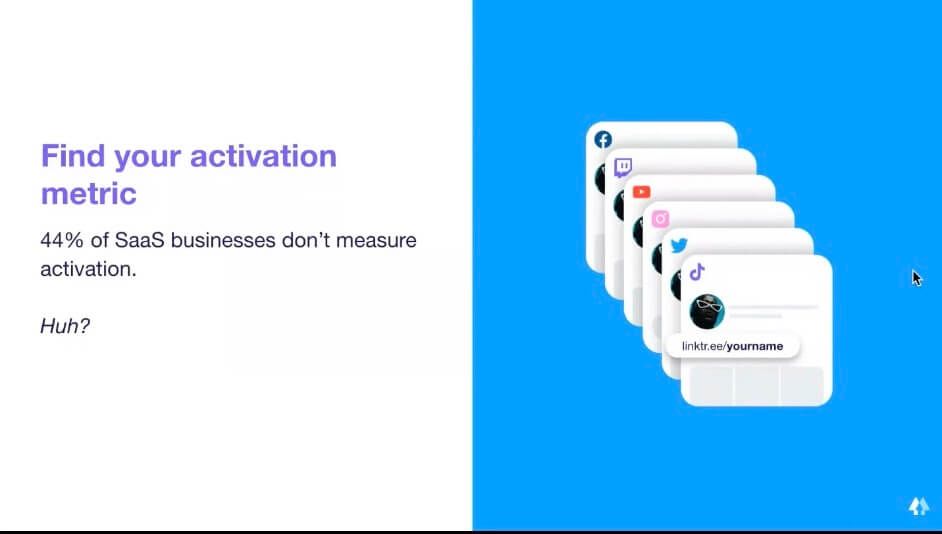
Launch a paid version
The next key thing to focus on at this stage is launching a paid version. It's an obvious one - at some point, you need to monetize, but can so easily be done wrong or too early.
Given Linktree is a freemium product, launching a paid version with pro features was the logical next step to activate those users that want to get a little bit more from the product.
We have users from the varying ends of what we call the digital literacy scale, which is those who are very new and fresh to marketing and using Linktree to start their journey, and then those who have a very fully-fledged marketing team.
So we needed to support both of those types of users by adding new features to the product. If you find the right way to monetize, and we're big fans of doing it ethically, and in the right way, you'll go all the way to 5 million quickly.
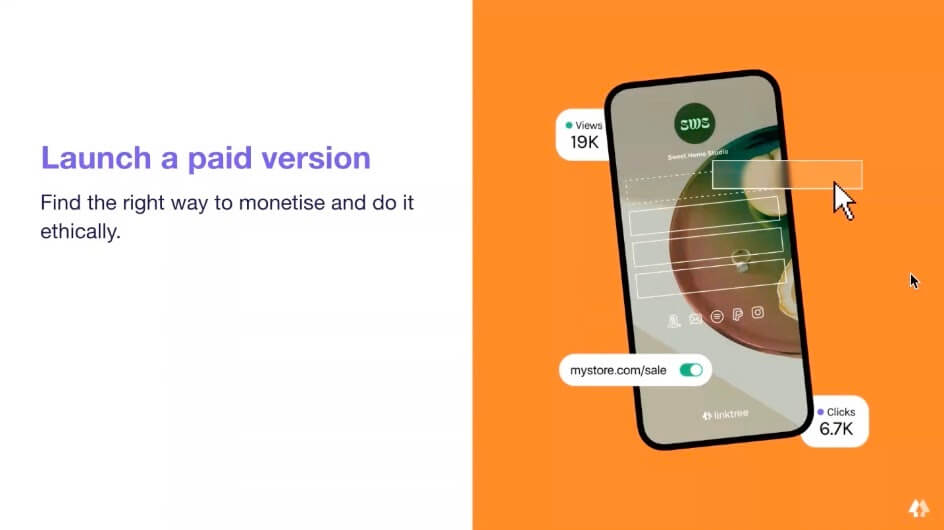
Spend money in the right areas
The final point here is spending money in the right areas. I think this should be your mantra at any size. But it's particularly important here to lay the groundwork for success.
Test small
Designing test per market has proved very successful for us in understanding where our user growth can emerge from outside of just organic growth from the product.
Get attribution right
If you have the right attribution tool in place to see if these users are quality users, then go absolutely big.
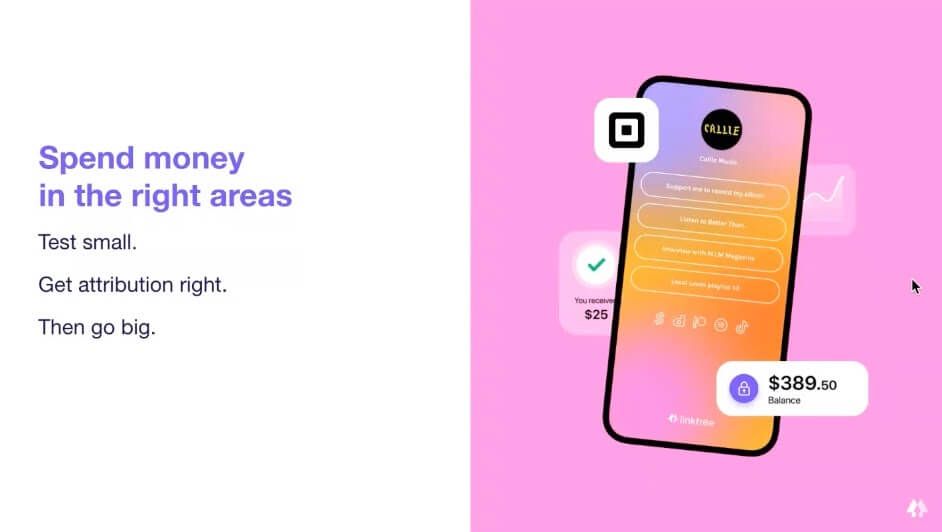
Without attribution, you're basically throwing money at the air and hoping it'll stick. Not a good strategy though, I'm sure lots of fun.
What fails at this point?
Perfection kills progress
Don't add too much process too early. You want your team to be free to experiment and bringing in too much structure too early hinders their progress and creativity and decreases your speed to market.
Example: Magic Leap
A very public example of failure here is Magic Leap. The AR startup raised 2.6 billion, but only had 6,000 sales recorded. The product was beautiful, of course, but by the time it got to market, too much time had passed and been spent in the product building phase versus shipping and testing early to find the right market fit.
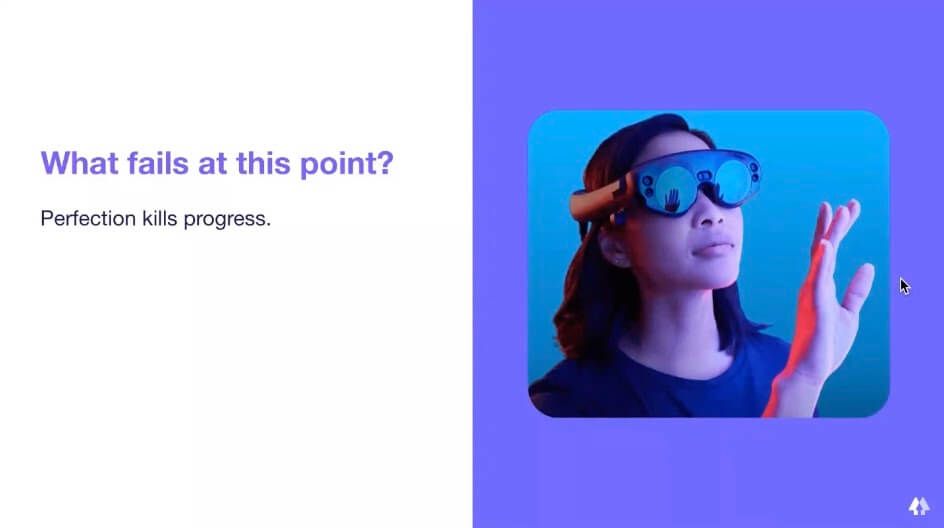
5 million to 12 million customers - the sapling years
Onwards and upwards
Now you've got your monetization model working, you found your flywheel through experimentation, and built a squad of people around the growth function and the broader business - onwards and upwards.
This is the fun part where you're refreshing your metrics every day, wondering how much you've grown overnight, and which country has popped up ahead, which we certainly do and we see changes quite frequently.
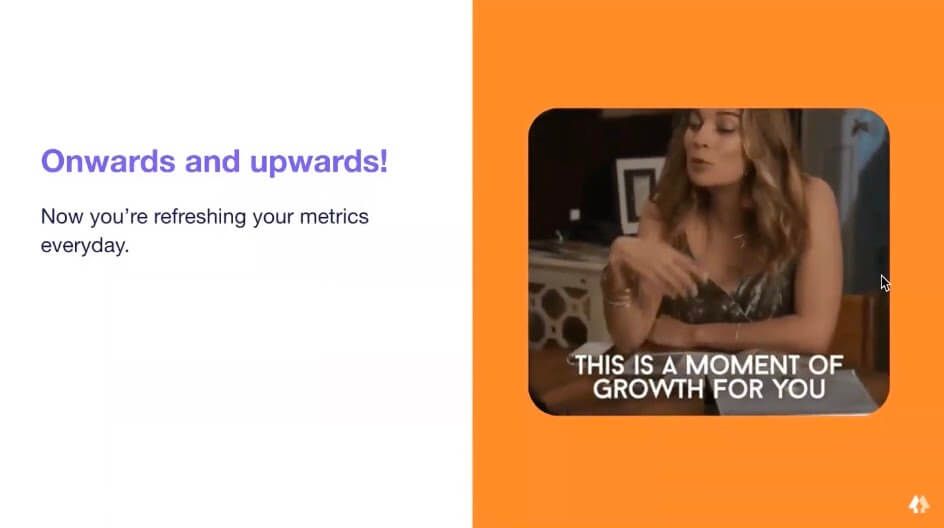
Your team size is likely now sitting between 20 to 60 people and processes are forming to help you scale faster.
Building target metrics
The first thing to focus on here is building target metrics. Using data to make decisions throughout is super important.
When you hit 5 million, you'll be leaning in more than ever to your data sets or dashboards. Often intuition and gut have got you here particularly for a product-led company. But for the next stage and beyond data will be how you find your focus.
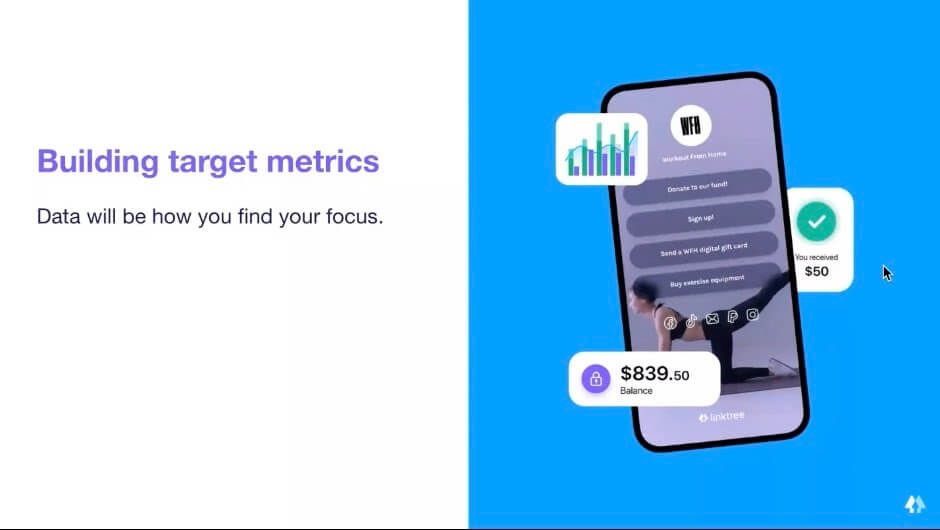
I'd recommend investing in a BI tool here that will empower the team and the broader business to use data to explore insights. We currently use Heap as it allows you to retrospectively track events which was particularly important at this stage as we were running very fast, but also a range of others.
Use data, explore insights, establish OKRs
On the target metrics themselves, Google's OKR framework has been incredibly successful for us in growth and the broader business to break down things like MRR, subscriber targets, total Linktrees, and provide the team with a clear direction each quarter for where our focus should be.
It's easy to get distracted when you have so much opportunity at this stage which we are fortunate to do. But OKRs and your key metrics keep you aligned, accountable, and focused.
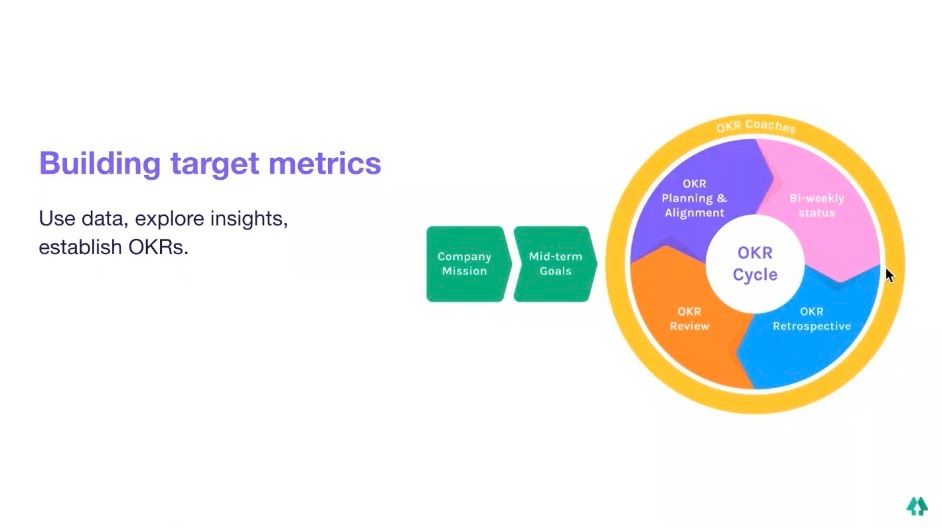
More importantly, it allows you to say no to things versus having to say yes all the time.
Hire the right people
The second point here is hiring the right people. I can't stress how easy this is to get wrong. When you're up to your ears in release deadlines and go-lives, it's easy to say yes because you need someone.
It doesn't mean they're the right fit and making a decision like that could mean bringing on a serious culture detracter. My new motto here is if it's not a hell yes, it's a no.
Trust your gut and don't compromise.
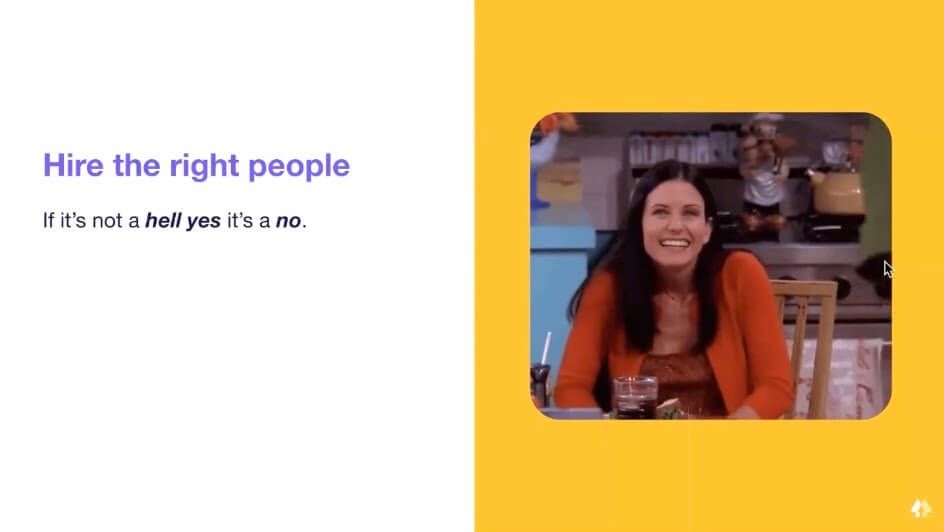
At Linktree we have a methodical approach to our hires, including designing tests for each interview process that allows us to see the candidate's skills in action prior to hiring them.
From our most junior to our most senior hires, the process is the same. As we're looking for value alignment to the business with their personal values and lack of ego to know if they're the right cultural ad versus detracter to the team.
Find your North Star
The third one here is to find your North Star. While I'm not a huge fan of having one metric you work towards, I find the exercise of distilling metrics down into leading indicators versus lagging indicators of success, the critical workshop to do with your team at this stage.
Example: Spotify
Spotify's experience with the North Star is very public, they focus on time spent by subscribers listening to music as a proxy for activation, which then increases revenue and produces business value.
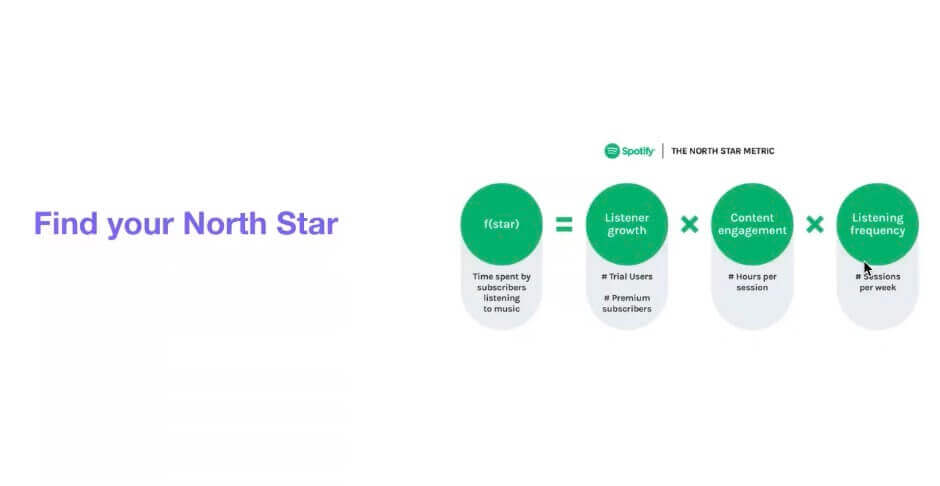
I find the key value in the North Star framework is actually discussing what metrics are important and getting alignment on where your focus should be.
12 million customers and above
Where to from here?
I'll be honest, nothing is ever perfect and we're always learning. Every day, we add more and more users to the platform and get more data to learn more about the behaviors we're seeing on the product.
You need to be okay with knowing what you don't know and making mistakes. And also as leaders, making your team feel comfortable in that environment.
Stay connected to your purpose and rally behind it
As long as you remain true to your company values, you'll have a clear path forward, and you'll do it together. At Linktree, we have a clear purpose that we rally behind and hopefully, that's run through in this article.
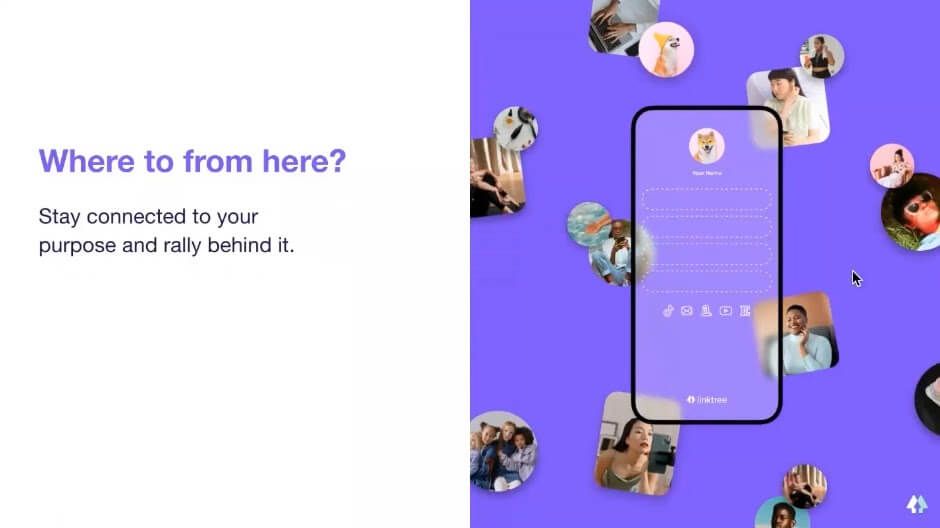
Having just hired our Head of People and Culture much earlier than companies typically do at our stage, we know how important it is to keep this purpose embedded in our culture, as we scale across time zones and countries around the world.
Summary
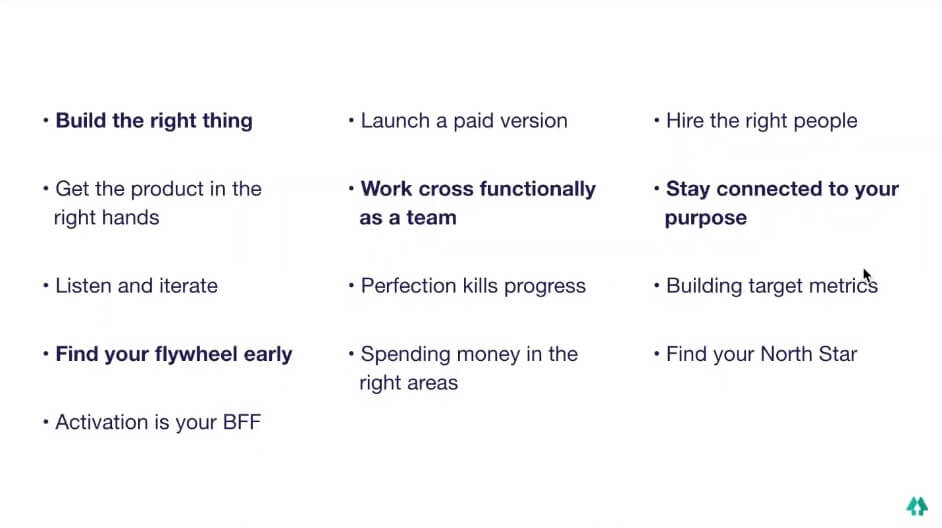
I'm going to pick out four key points from this list, and one from each stage.
- Build the right thing.
- Find your flywheel early.
- Work cross-functionally as a team. And
- Stay connected to your purpose.
Thank you.



 Follow us on LinkedIn
Follow us on LinkedIn



